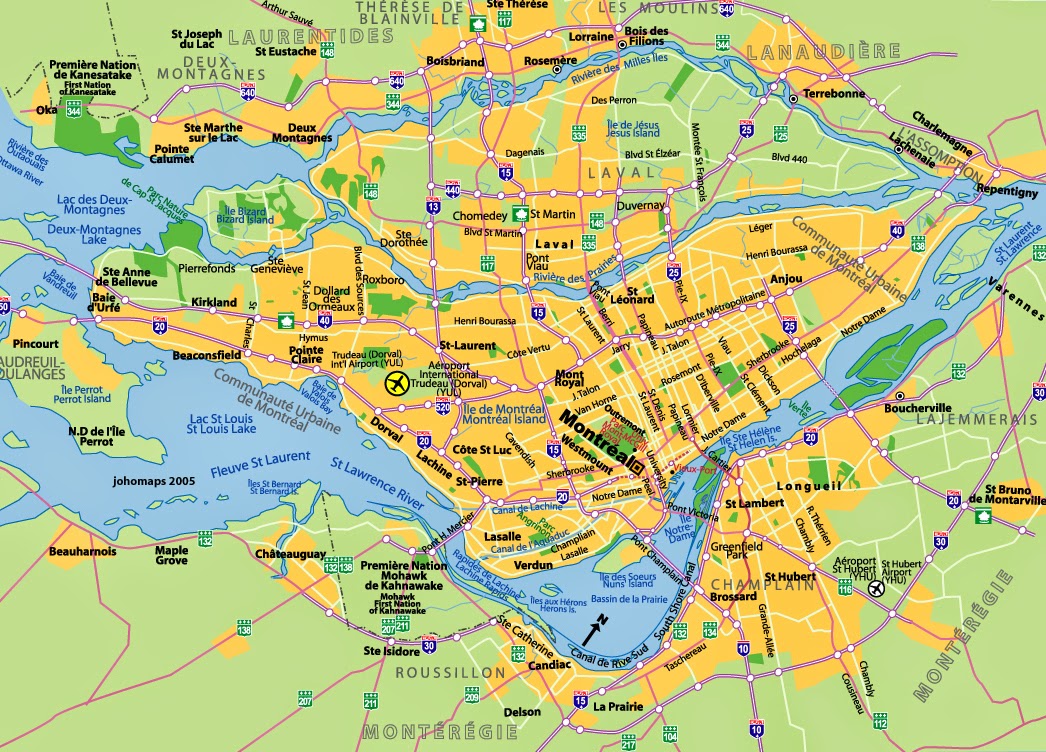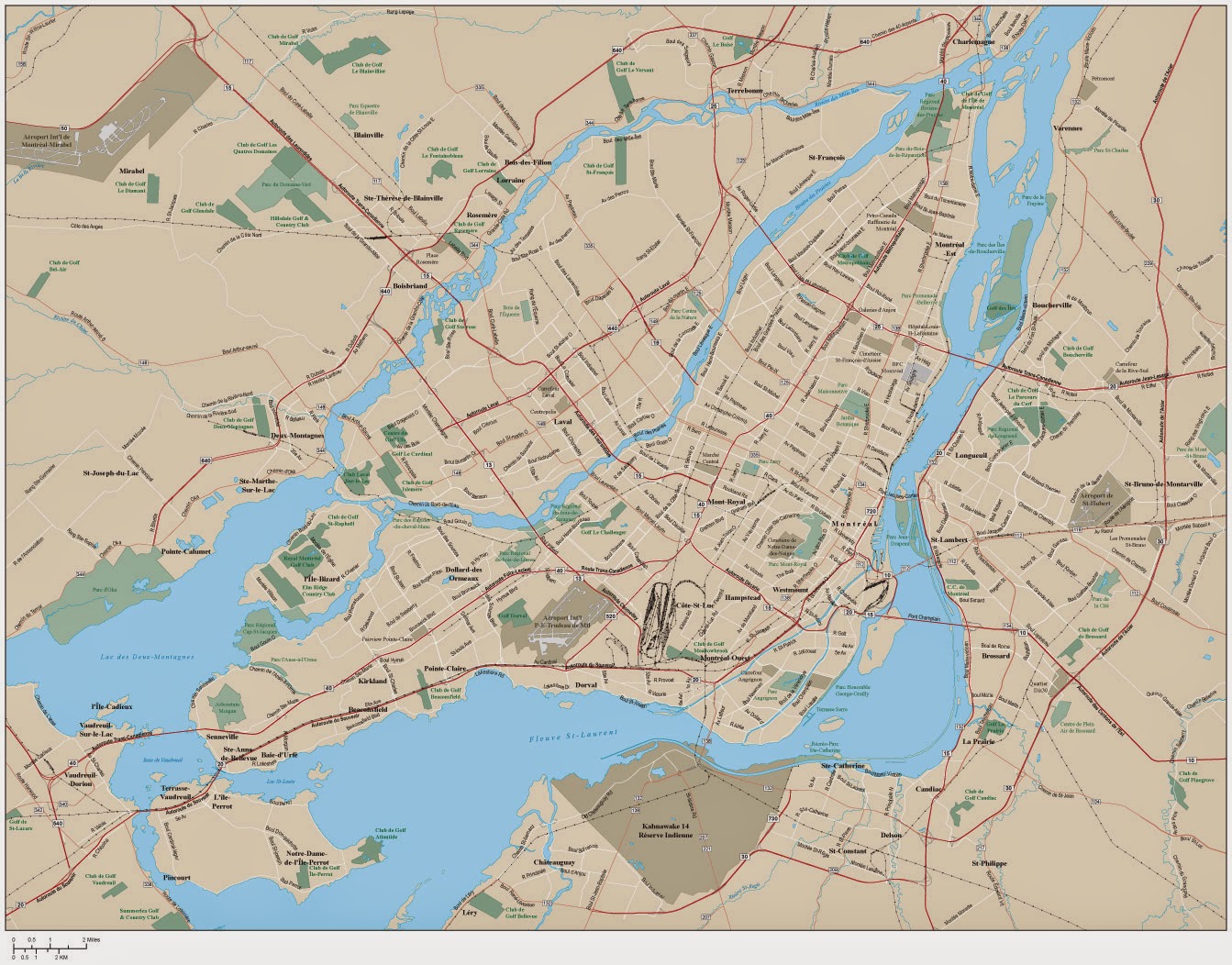Montreal Map Quebec is an essential tool for anyone looking to navigate the vibrant streets of this Canadian metropolis. Known for its rich history, cultural diversity, and stunning architecture, Montreal is a city that deserves to be explored in depth. In this article, we will delve into the various aspects of the Montreal map, including its geographical layout, key attractions, neighborhoods, and tips for getting around. Whether you're a first-time visitor or a long-time resident, understanding the Montreal map will enhance your experience in this remarkable city.
Montreal, the largest city in Quebec, is known for its unique blend of French and English cultures, making it a truly cosmopolitan destination. From its historic Old Montreal to the bustling streets of downtown, the city offers a plethora of attractions and experiences that cater to all interests. A well-detailed map of Montreal is not just a navigation tool; it’s a gateway to discovering hidden gems, local eateries, and exciting events happening throughout the city.
In this comprehensive guide, we will break down the Montreal map into manageable sections, highlighting important landmarks, neighborhoods, and travel tips to help you make the most of your visit. Let's dive into the world of Montreal and uncover what this remarkable city has to offer!
Table of Contents
- 1. Overview of Montreal's Geography
- 2. Key Neighborhoods in Montreal
- 3. Major Attractions on the Montreal Map
- 4. Getting Around Montreal: Transportation Options
- 5. Cultural Highlights and Events
- 6. Tips for Using the Montreal Map Effectively
- 7. Frequently Asked Questions
- 8. Conclusion
1. Overview of Montreal's Geography
Montreal is situated on the Island of Montreal, which is located at the confluence of the Saint Lawrence and Ottawa Rivers. The city covers an area of approximately 431.5 square kilometers and is characterized by its hilly terrain and extensive waterfront. The Montreal map highlights several key features that define the city's layout:
- **Mount Royal**: A prominent hill in the center of the city, offering stunning views and recreational opportunities.
- **Saint Lawrence River**: This river forms the southern boundary of the city, providing scenic waterfront areas.
- **Vieux-Montréal (Old Montreal)**: A historic district filled with cobblestone streets, cafes, and boutiques.
- **Downtown Montreal**: The commercial hub of the city, featuring skyscrapers, shopping centers, and cultural institutions.
Understanding the Layout of Montreal
The Montreal map is divided into distinct neighborhoods, each with its own unique character and attractions. The city is generally organized into the following areas:
- **The Plateau**: Known for its bohemian atmosphere, colorful murals, and vibrant nightlife.
- **Little Italy**: Offers a taste of Italian culture with its cafes, markets, and the famous Church of the Madonna della Difesa.
- **Mile End**: A trendy neighborhood famous for its artisanal shops, bakeries, and music scene.
2. Key Neighborhoods in Montreal
Exploring the neighborhoods of Montreal is a delightful experience, as each area has its own distinct flavor and offerings. Here are some of the key neighborhoods to include in your exploration:
Vieux-Montréal (Old Montreal)
Vieux-Montréal is the historical heart of the city, featuring cobblestone streets and well-preserved architecture from the 17th and 18th centuries. Key attractions include:
- **Notre-Dame Basilica**: A stunning Gothic Revival church known for its breathtaking interior.
- **Place Jacques-Cartier**: A lively square filled with restaurants and street performers.
- **Montreal Science Centre**: An interactive museum perfect for families.
Downtown Montreal
The downtown area is the commercial and cultural center of Montreal, home to many skyscrapers, shopping malls, and cultural institutions. Important landmarks include:
- **McGill University**: One of Canada’s top universities with a beautiful campus.
- **The Montreal Museum of Fine Arts**: A major art museum showcasing a diverse collection.
- **Bell Centre**: The home of the Montreal Canadiens hockey team.
3. Major Attractions on the Montreal Map
Montreal is brimming with attractions that cater to various interests. Here are some must-visit places that you can easily locate on the Montreal map:
Mount Royal Park
Designed by Frederick Law Olmsted, the same landscape architect behind New York's Central Park, Mount Royal Park offers a natural escape within the city. Activities include:
- Hiking and walking trails
- Picnic areas with stunning views
- In the winter, skiing and snowshoeing opportunities abound
Jean-Talon Market
Located in Little Italy, Jean-Talon Market is one of the largest public markets in North America. Visitors can enjoy:
- Fresh produce and local products
- Prepared food stalls offering diverse culinary options
- Seasonal events and festivals
4. Getting Around Montreal: Transportation Options
Understanding how to navigate the city is crucial for maximizing your time. The Montreal map provides insights into various transportation options:
Public Transit System
Montreal boasts an extensive public transit system, including buses and the Metro. Key points include:
- **Metro**: A reliable subway system with four lines covering major areas.
- **Buses**: Complement the Metro and reach areas not serviced by it.
- **Opus Card**: A rechargeable card for seamless access to public transit.
Biking and Walking
Montreal is a bike-friendly city with numerous bike lanes and paths. Walking is also a great way to explore neighborhoods and discover local shops and cafes.
5. Cultural Highlights and Events
Montreal is a cultural hub with a vibrant arts scene and numerous festivals throughout the year. Notable events include:
- **Montreal International Jazz Festival**: The largest jazz festival in the world, attracting top artists.
- **Just for Laughs**: A comedy festival featuring local and international talent.
- **Montreal World Film Festival**: Showcasing films from around the globe.
6. Tips for Using the Montreal Map Effectively
To make the most of your experience, consider these tips for using the Montreal map:
- Familiarize yourself with the public transit routes.
- Highlight key attractions before your trip to save time.
- Download a digital map for easy access on the go.
7. Frequently Asked Questions
Here are some common questions about the Montreal map and navigating the city:
Is it safe to walk around Montreal at night?
Generally, Montreal is considered safe, but it's always wise to stay aware of your surroundings.
What language is predominantly spoken in Montreal?
French is the official language, but English is widely spoken, especially in tourist areas.
8. Conclusion
Understanding the Montreal map is key to unlocking the many experiences this vibrant city has to offer. From exploring its rich neighborhoods to attending cultural events, Montreal is a destination that captivates the heart and soul. We encourage you to take action—grab a map, venture out, and discover the hidden gems of Montreal!
We hope you found this article informative and engaging. If you have any questions or would like to share your own experiences in Montreal, please leave a comment below. Don't forget to share this article with fellow travelers and check out our other guides for more insights into the beautiful city of Montreal!


